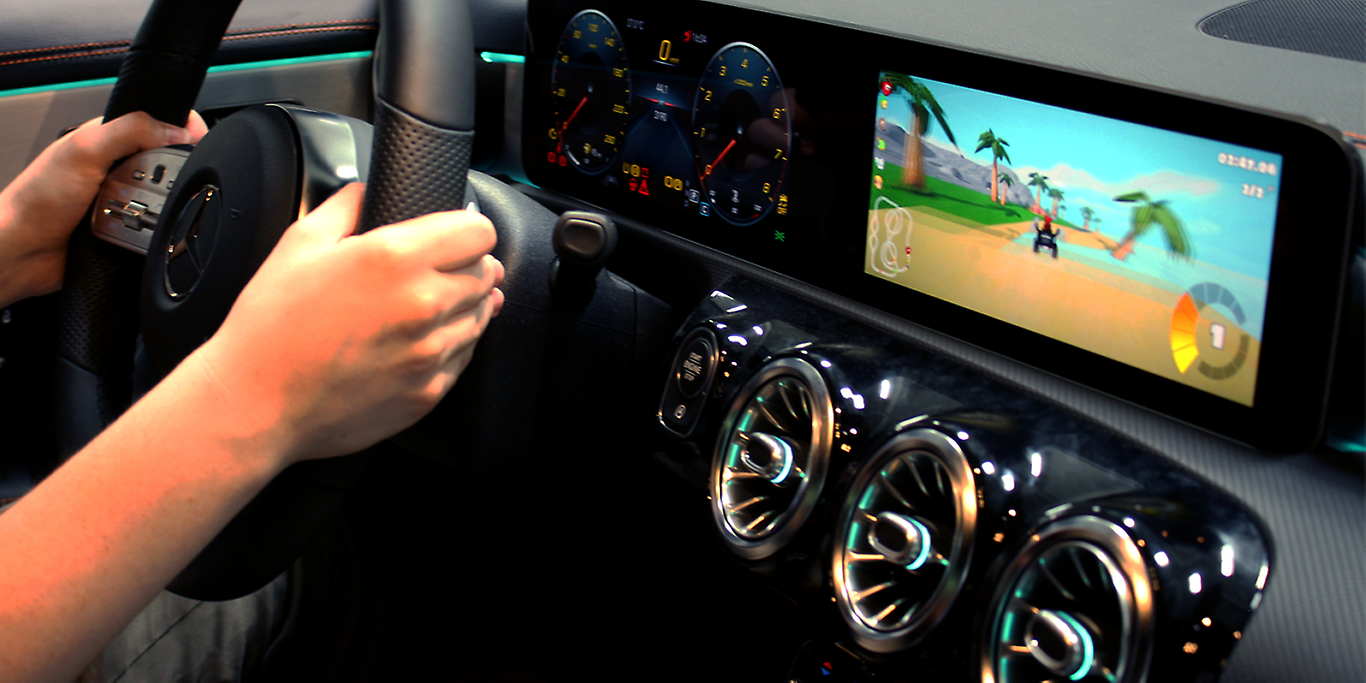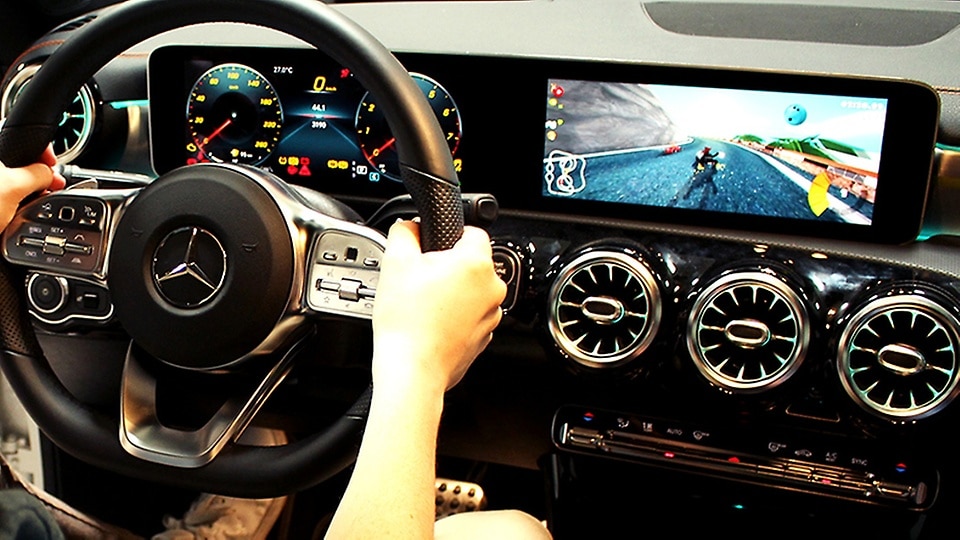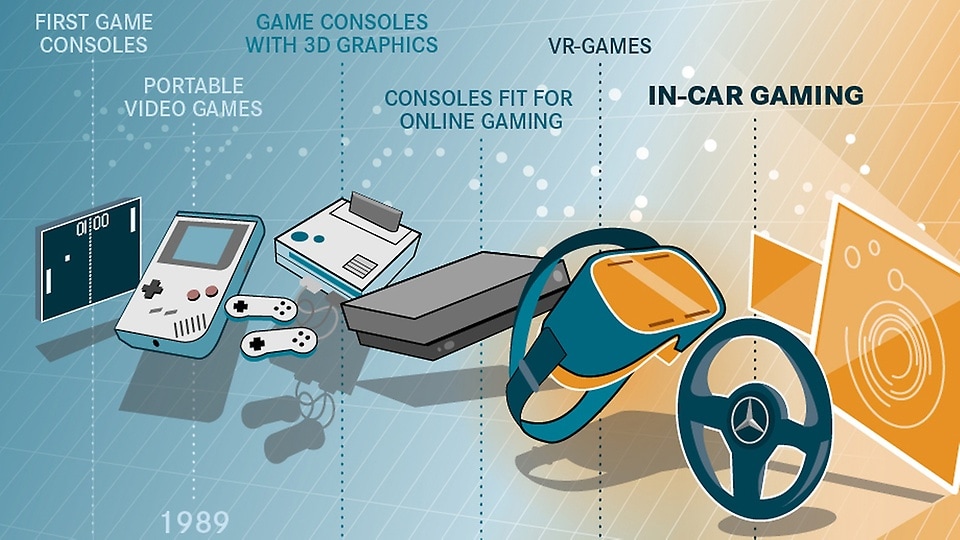Sven-Eric Molzahn floors the gas pedal, taps on the brake, and then races around a sharp left curve. Next, he returns to a straight stretch of the track and accelerates once again — but suddenly the rear wheels skid and the car’s progress is blocked by the crash barrier. He overlooked a banana peel that was lying on the track. Fortunately, the bodywork remains unharmed. That’s because even though Molzahn has forcefully jerked the steering wheel around and slammed his foot on the brake, the CLA he’s sitting in hasn’t moved a single inch.
Don’t get it wrong: The coupe is a series-produced vehicle and is of course approved for road use. But it’s way more than that: You could really call it a game console on wheels. The people responsible for creating it are Sven-Eric Molzahn and his colleague Fabian Gajek. The two of them have taken the video game SuperTuxKart, an open-source variant of a classic Nintendo game, and integrated it into a real vehicle.
The game runs on a screen in the center console, and the user steers the virtual go-cart exactly the way he or she would steer a real car. But it gets even better: The faster the virtual vehicle goes, the more air streams into the real car through the ventilation nozzles. The ambient lighting also plays along: If the car travels underwater in the course of the game, the lighting turns blue. If it drives through the desert, it’s red. And when the traffic light signals the start of the race, the ambient lighting is green.






